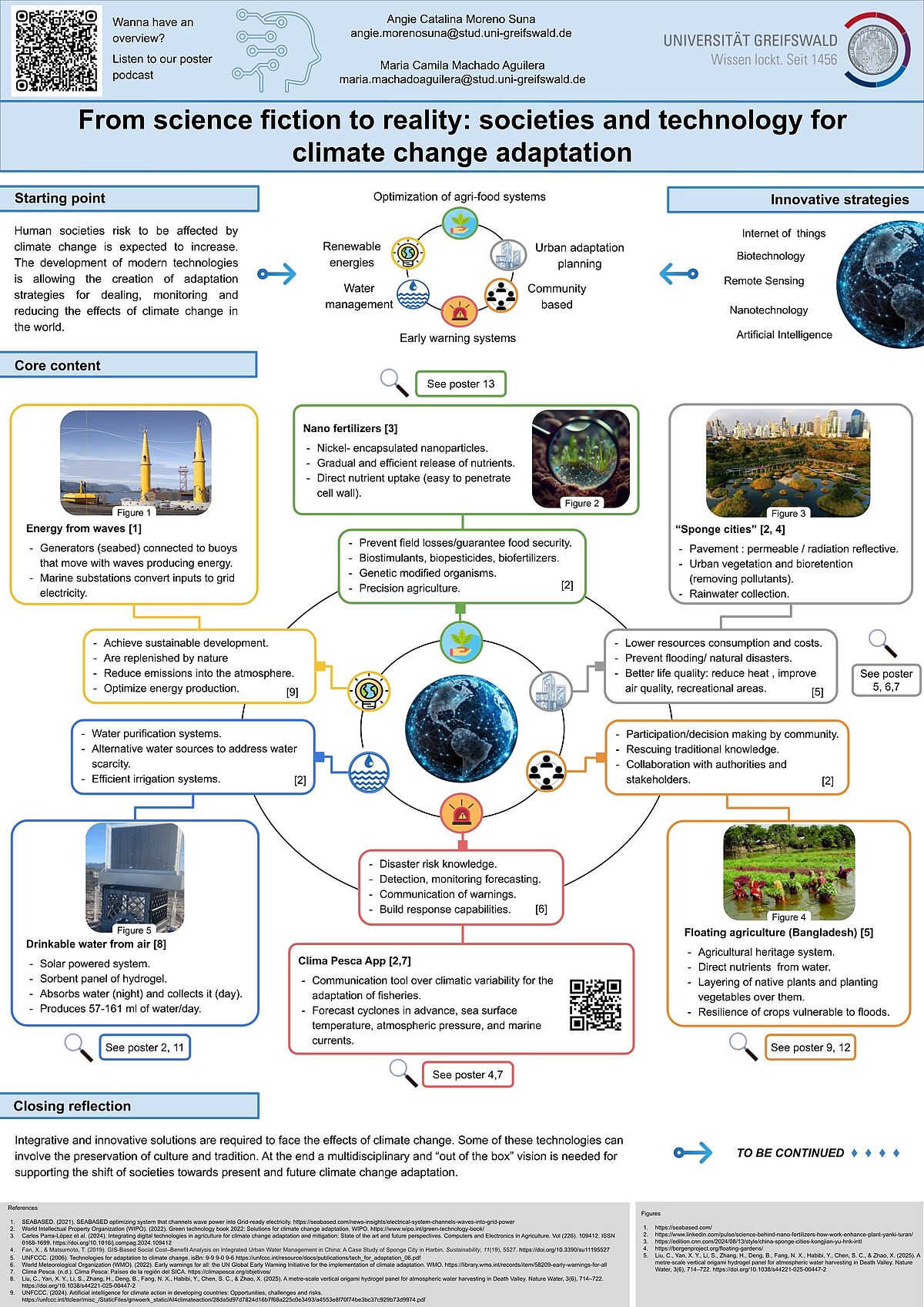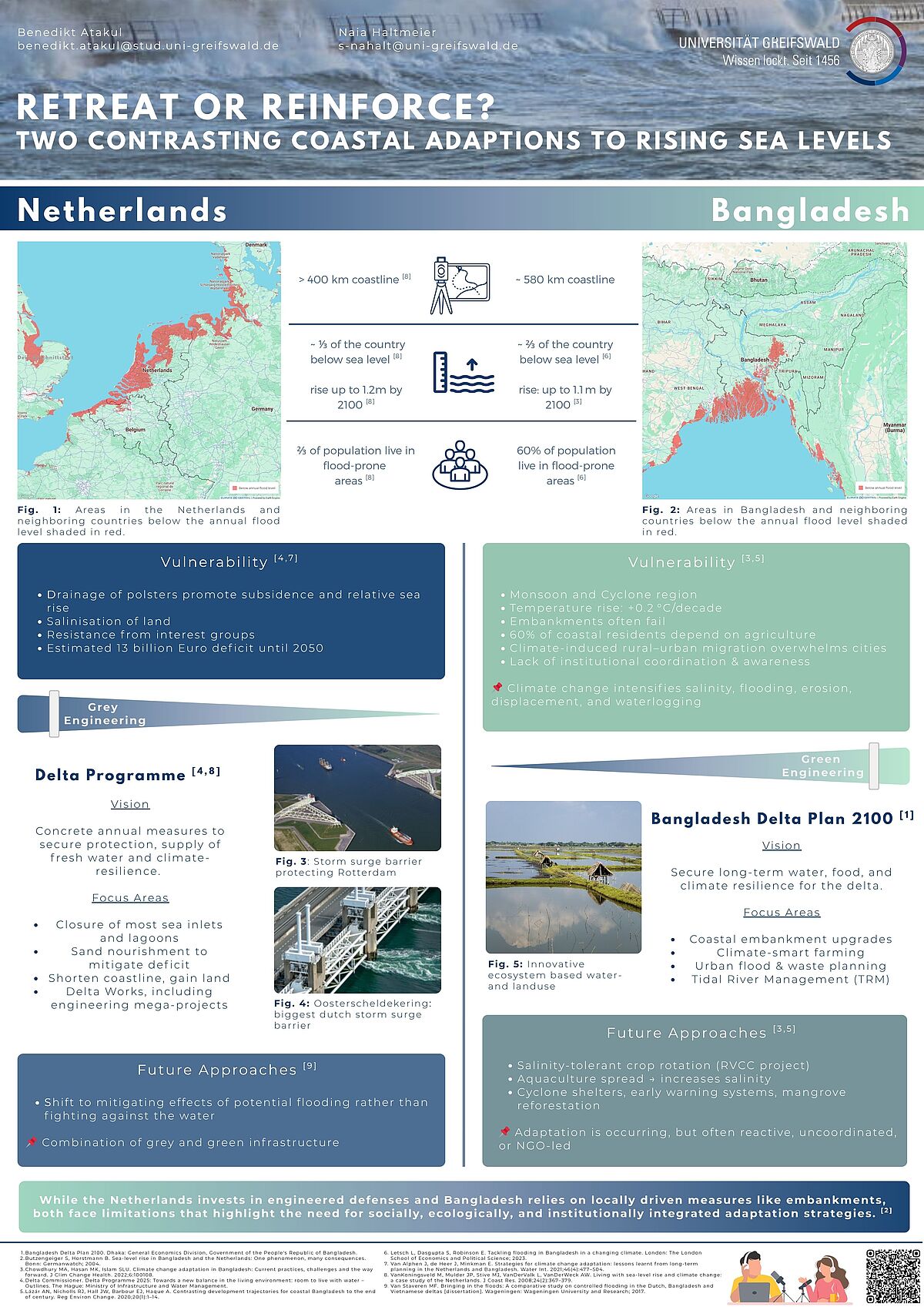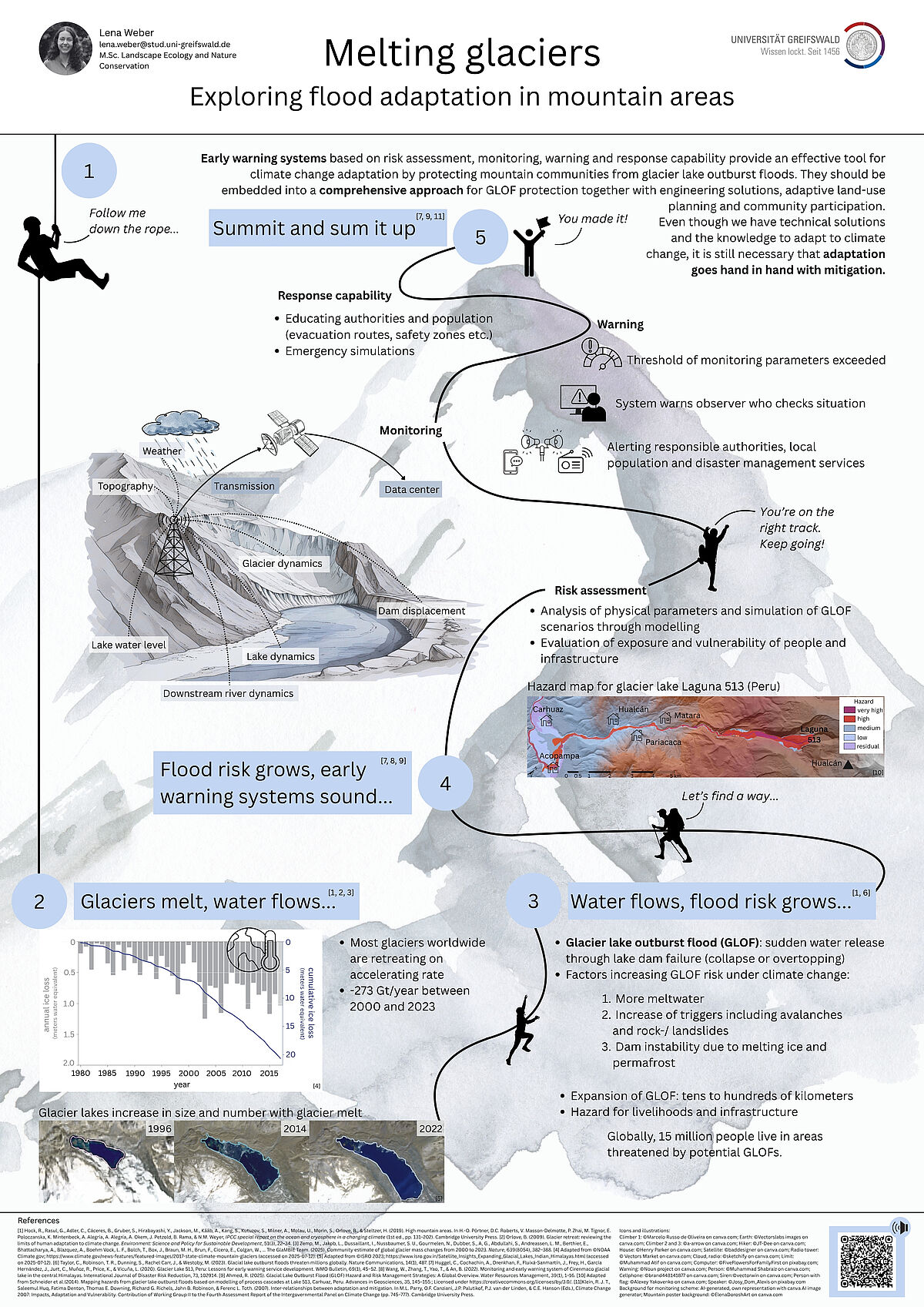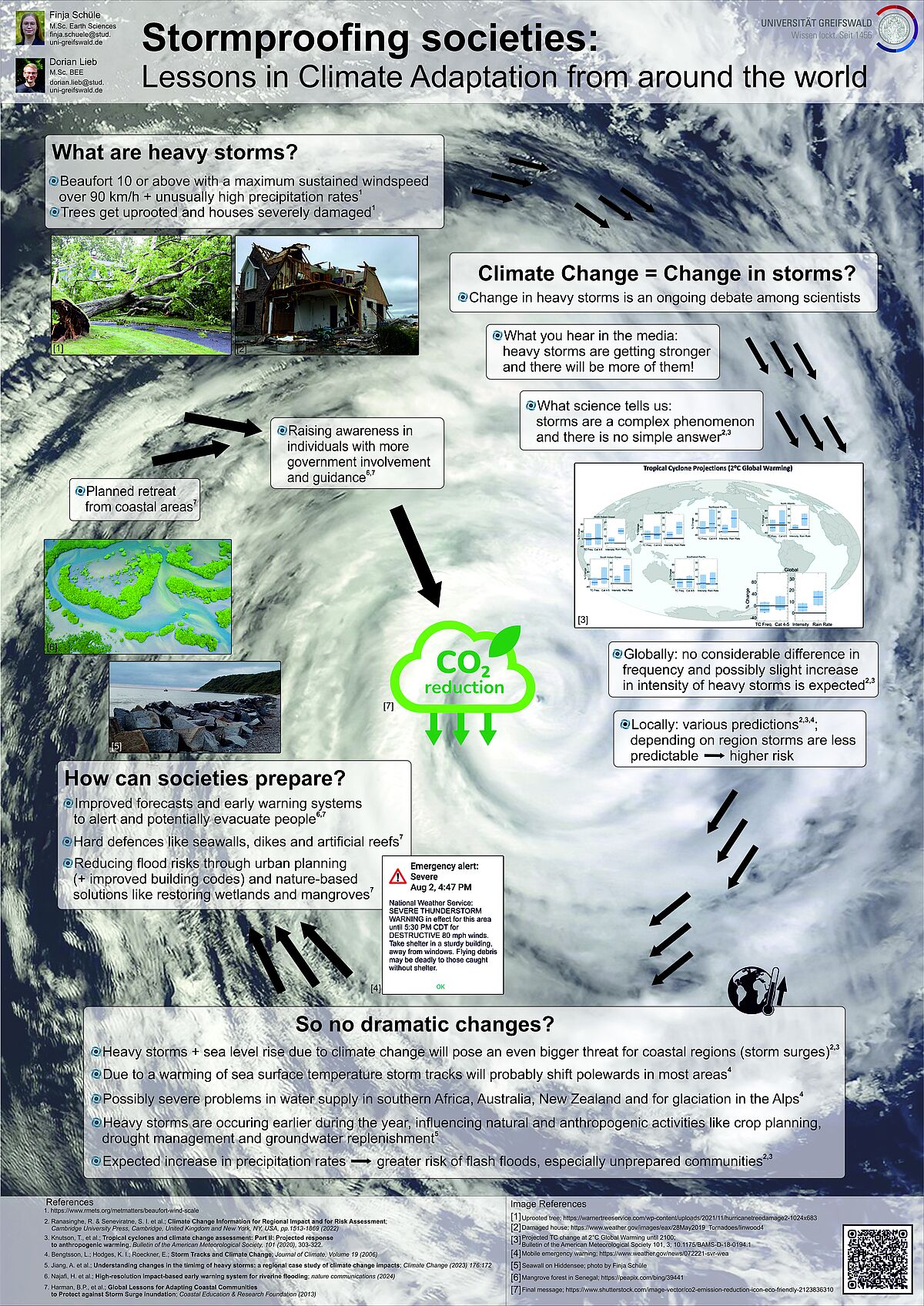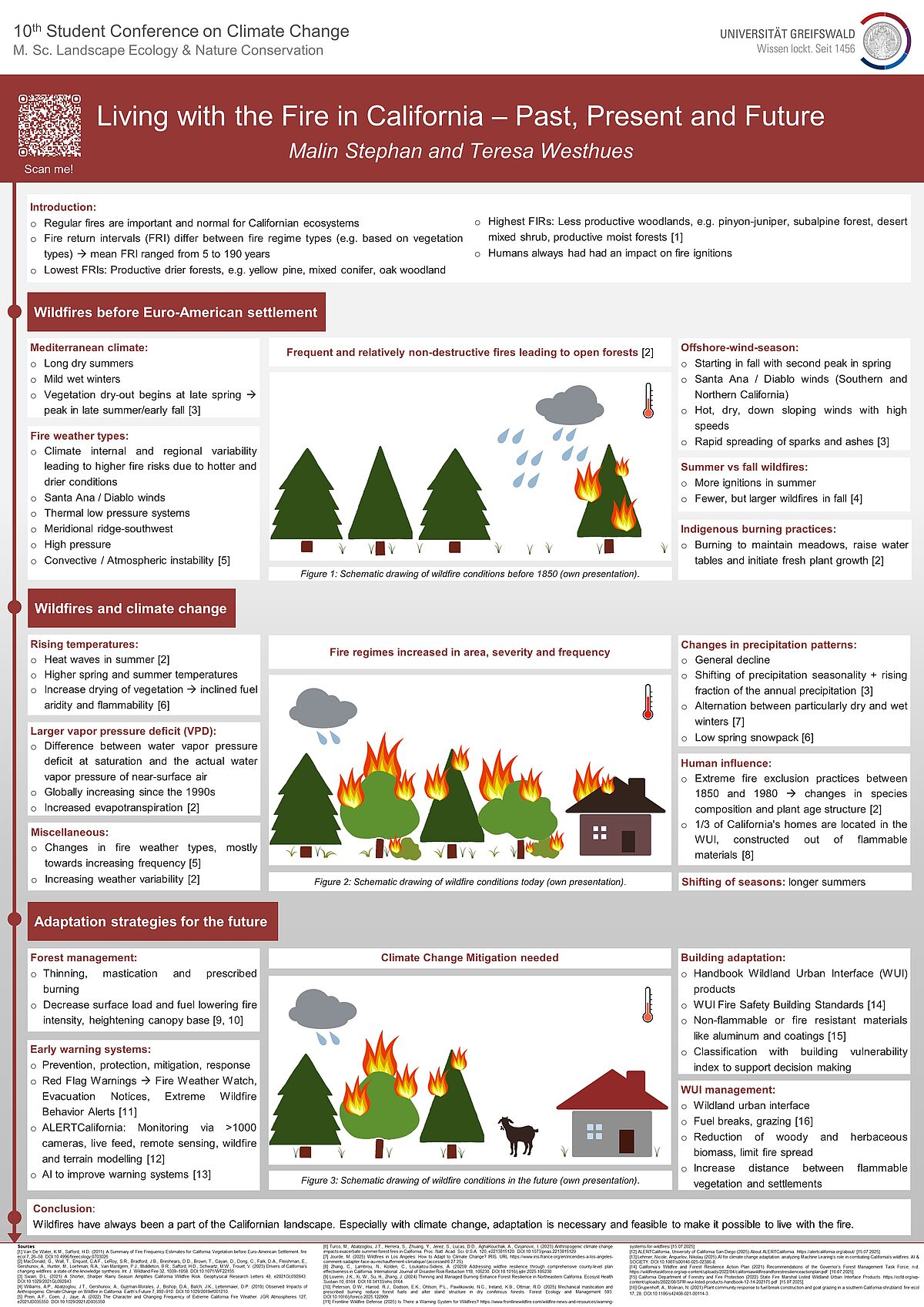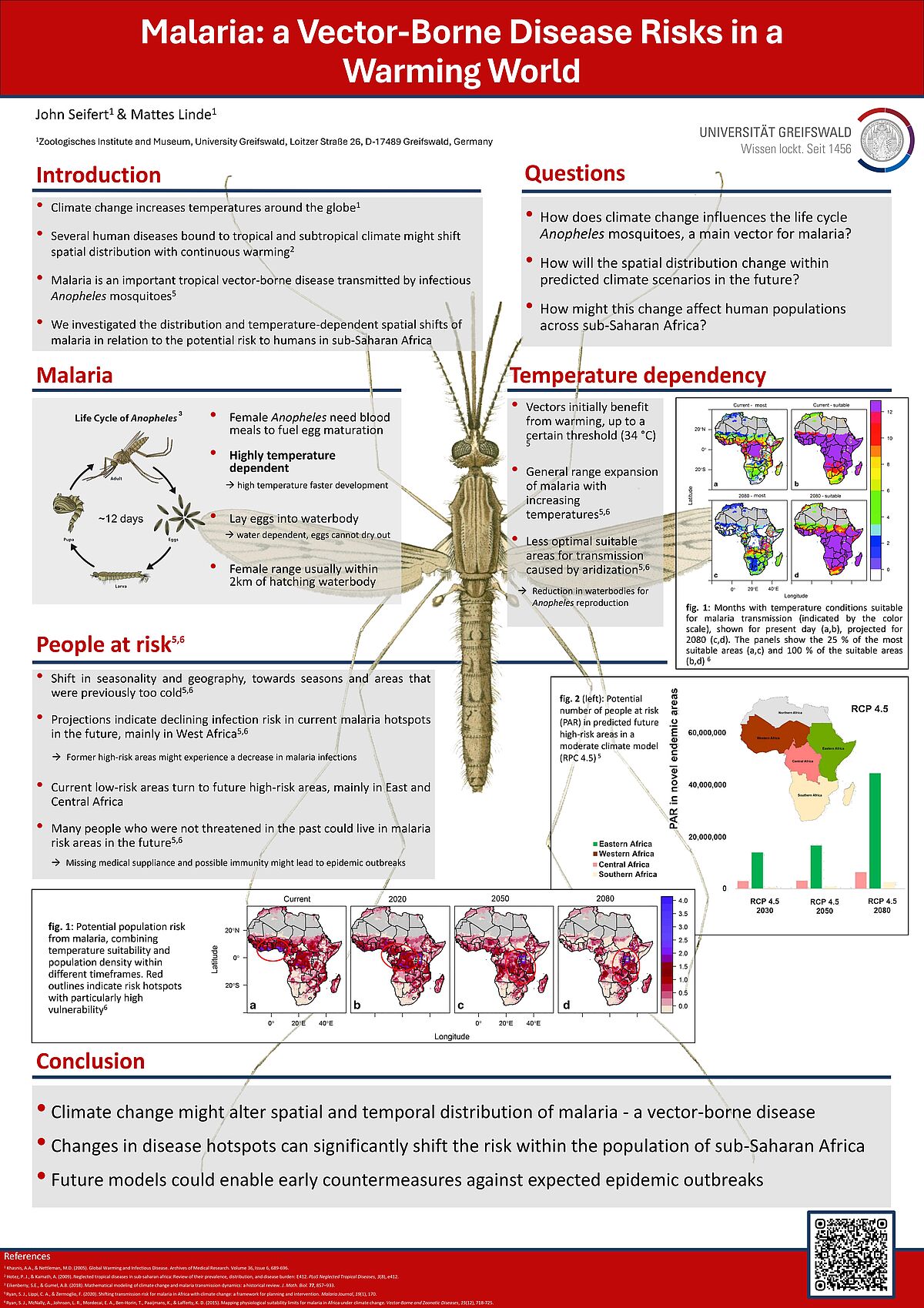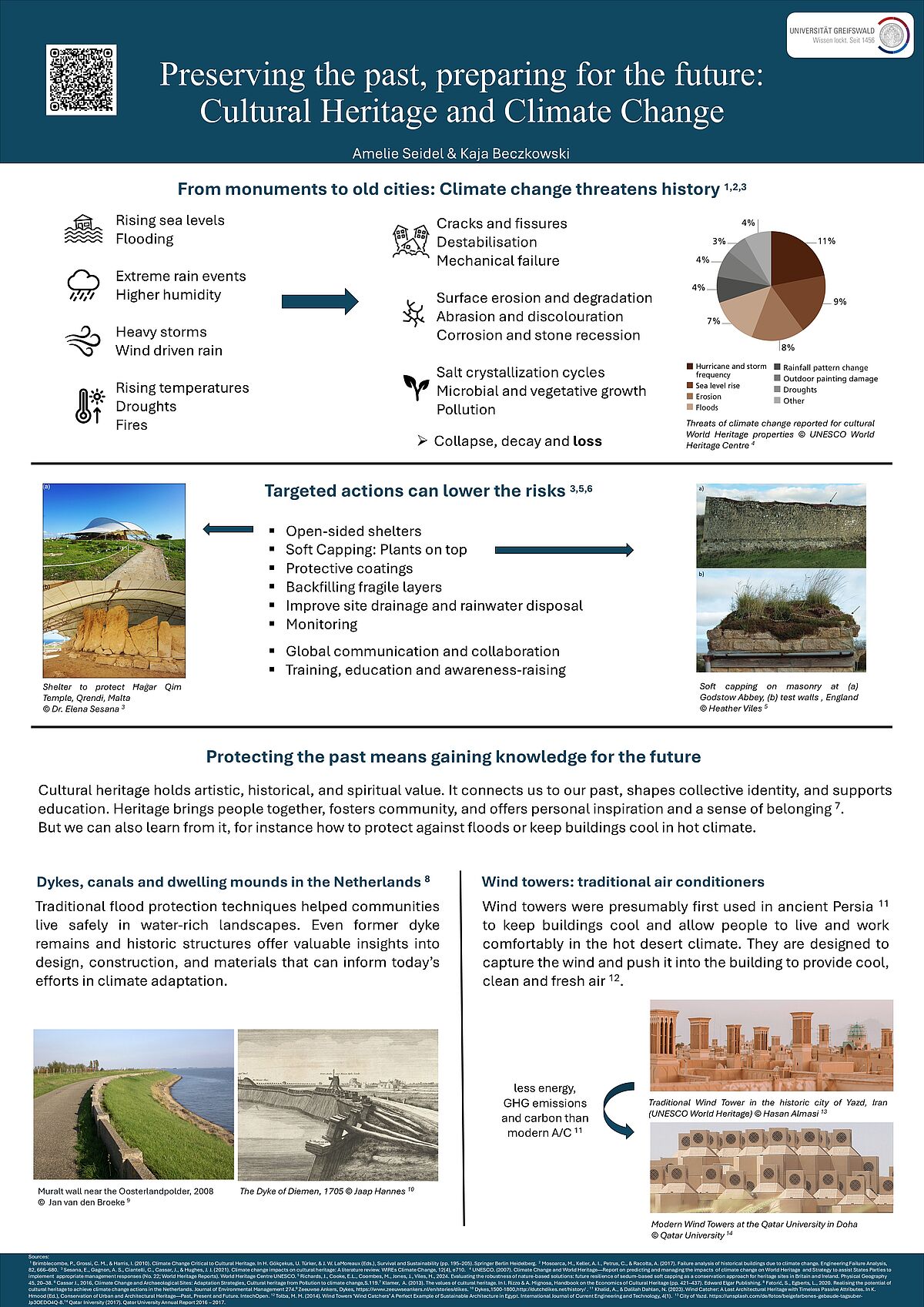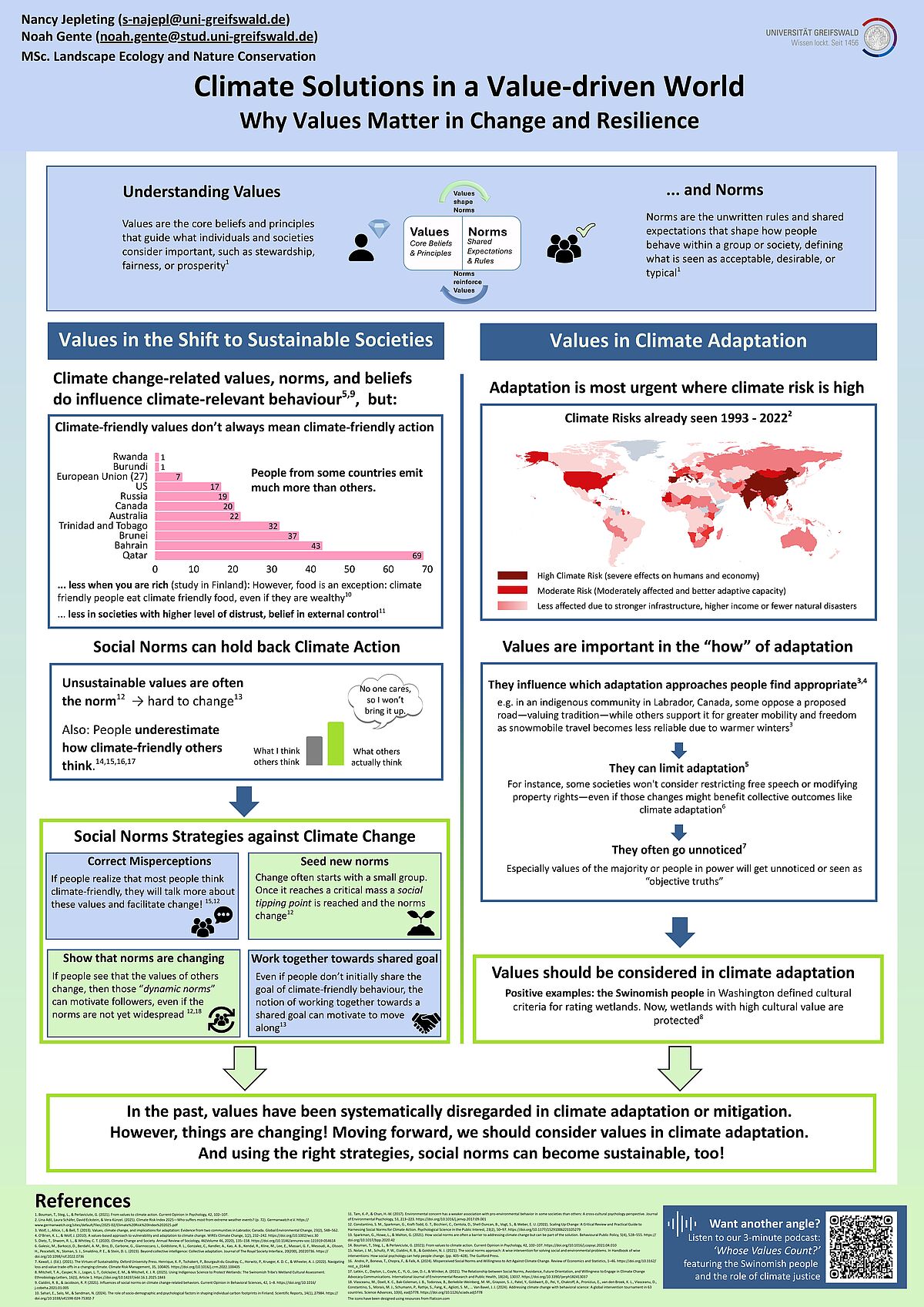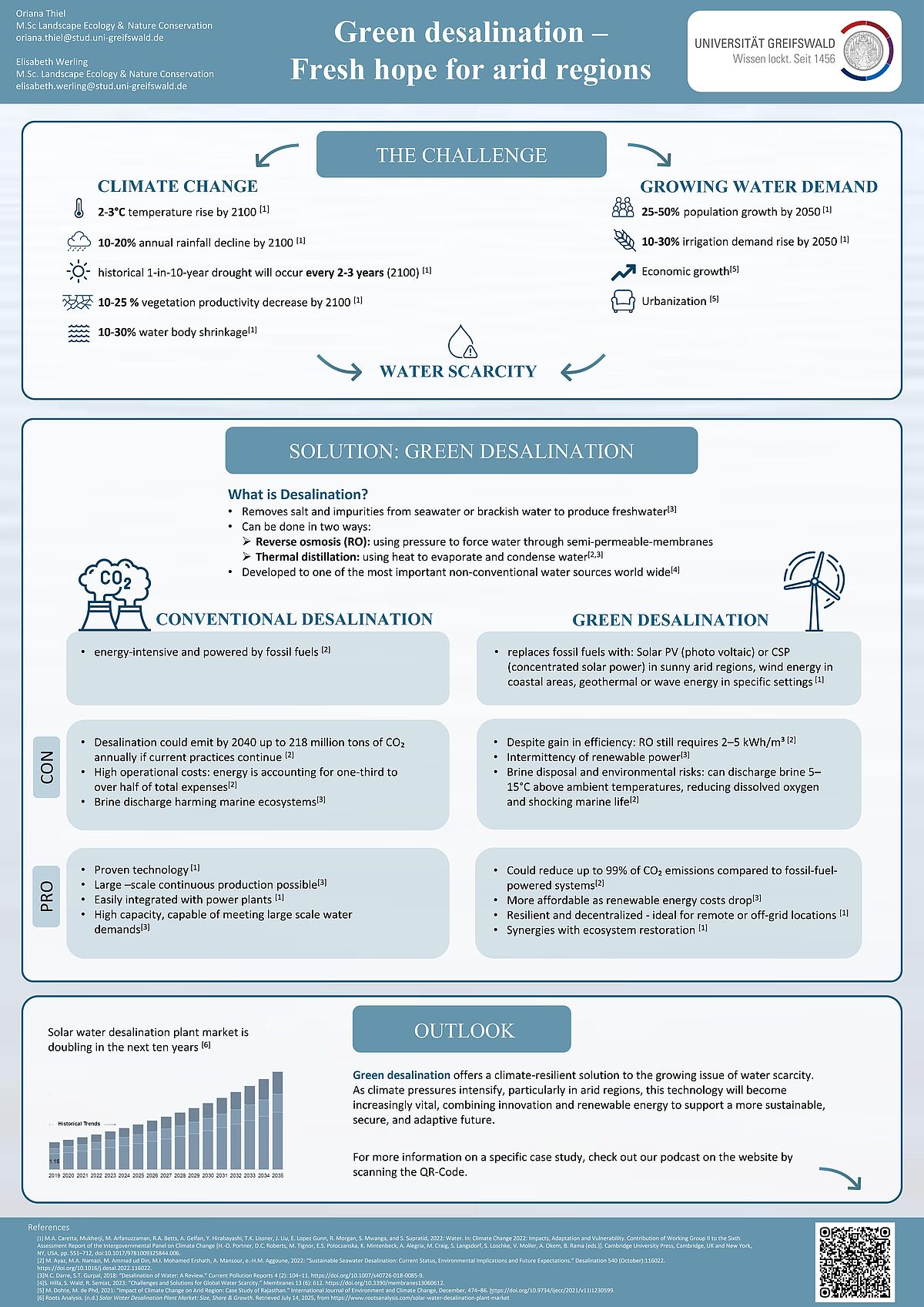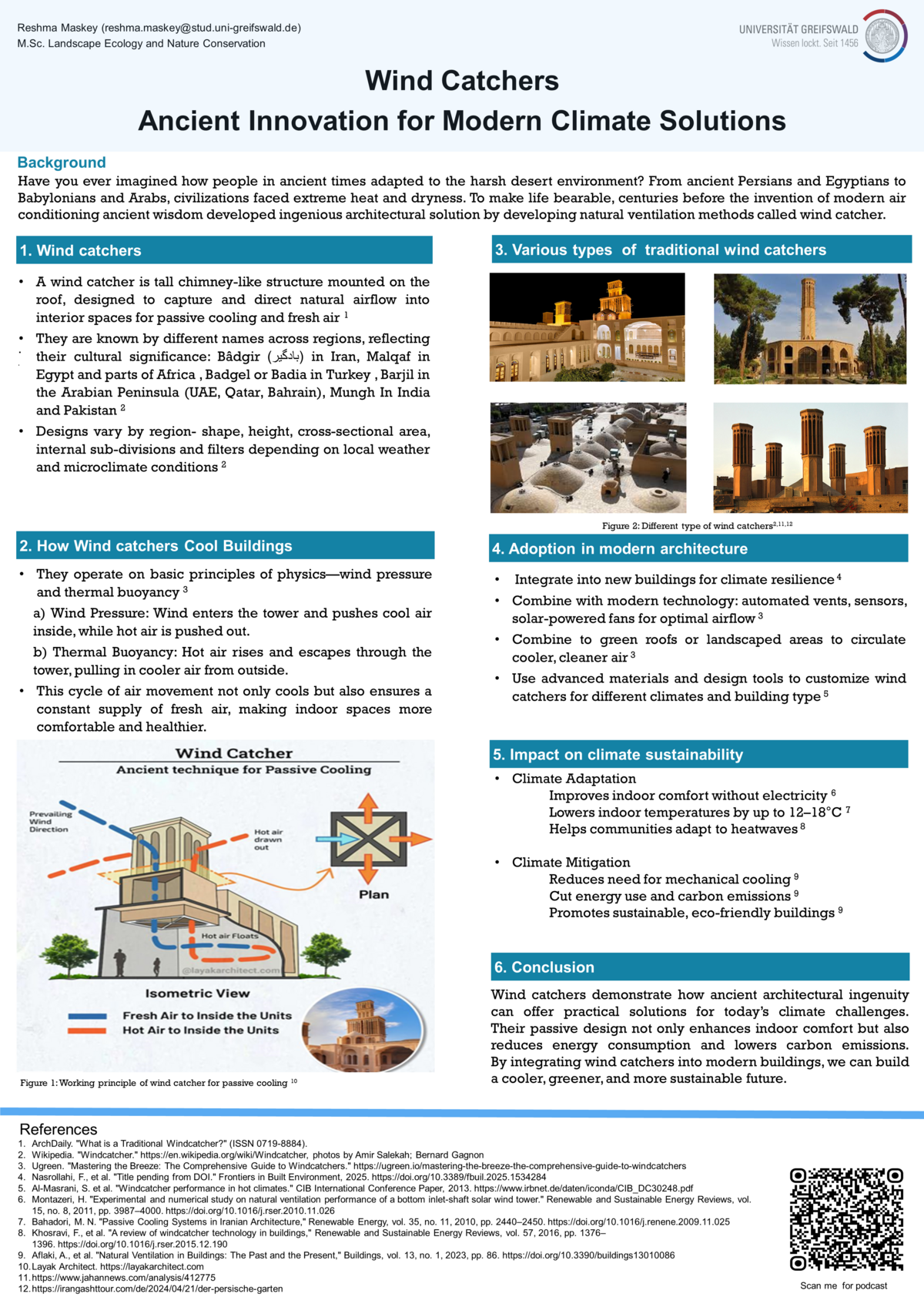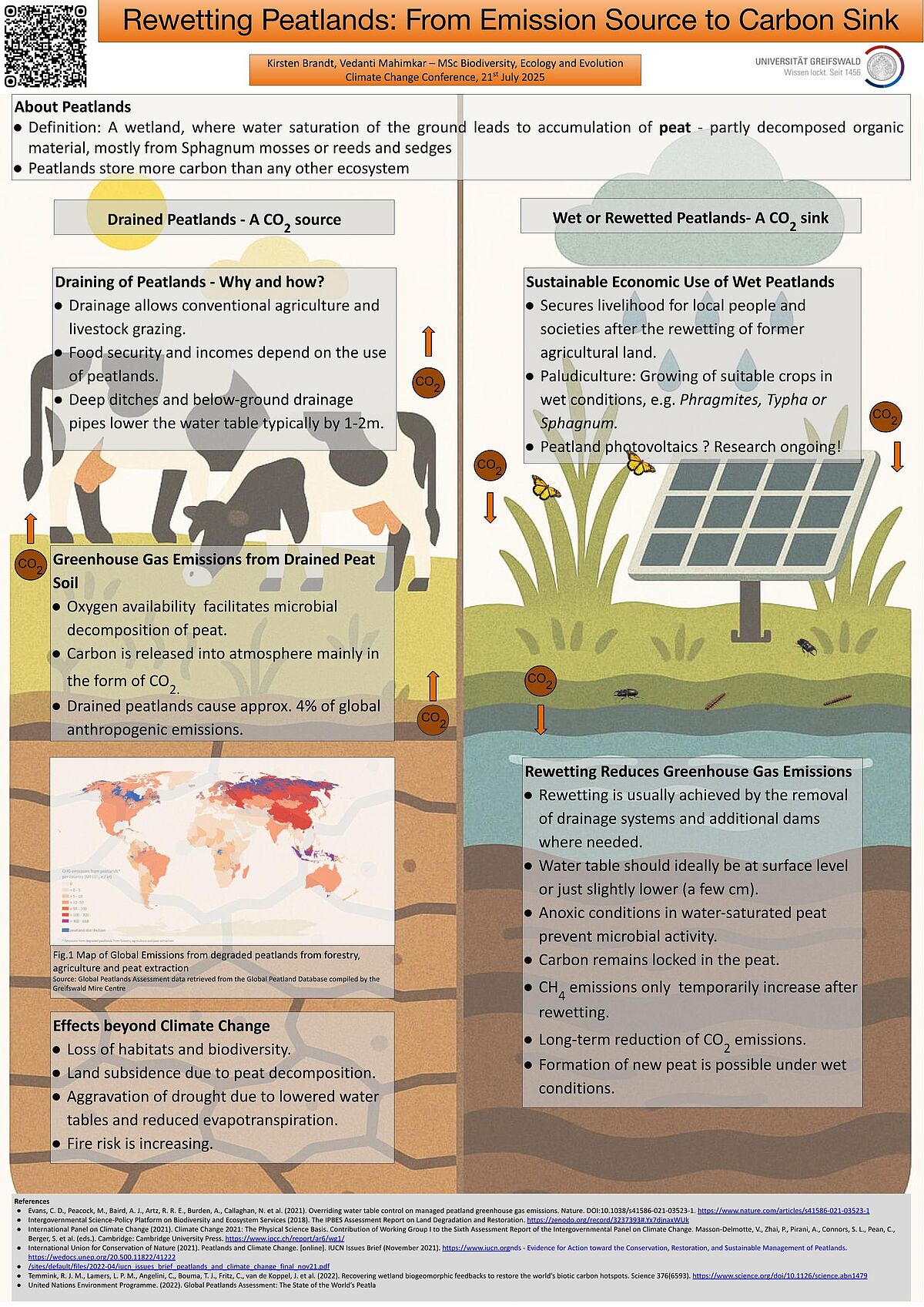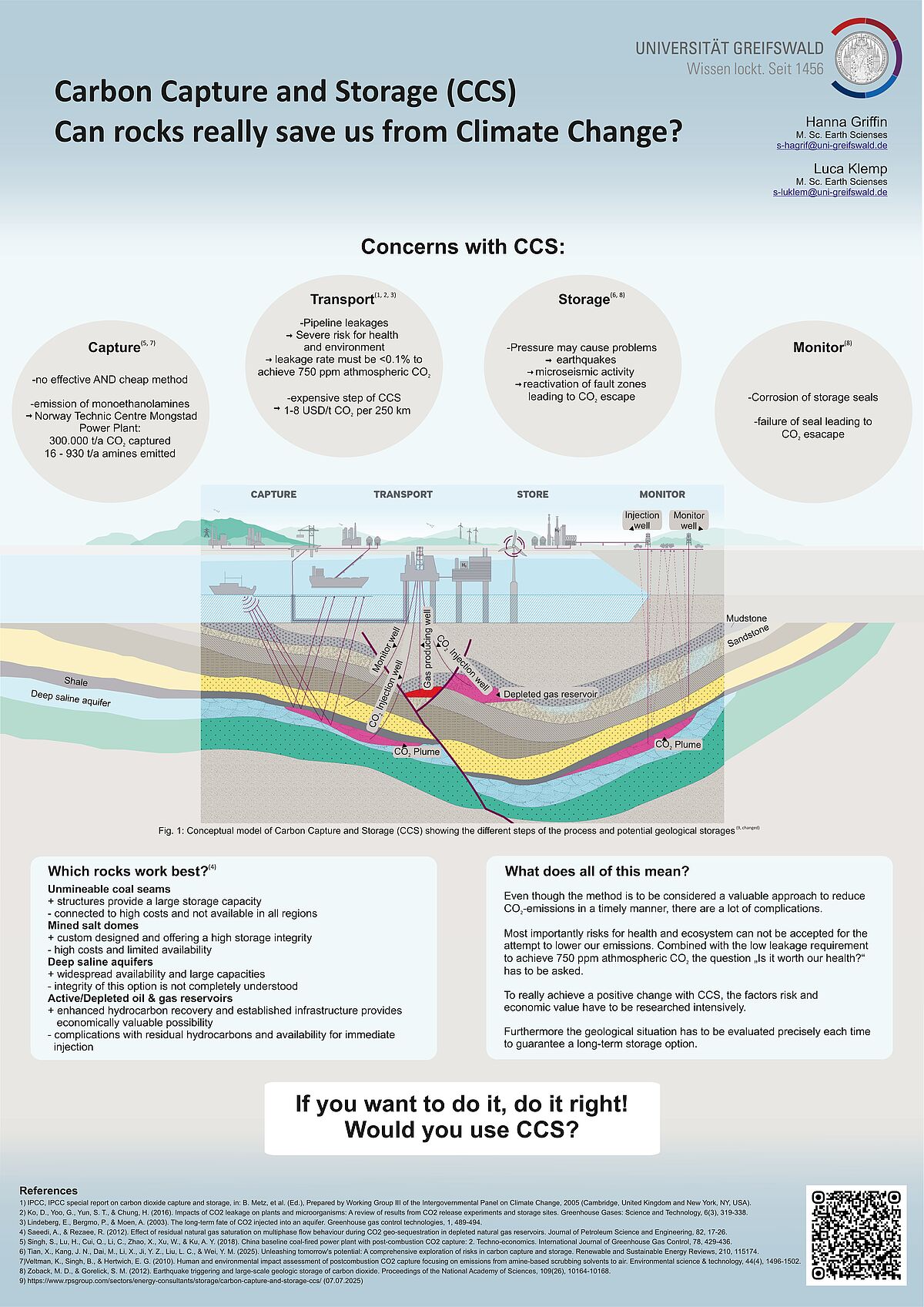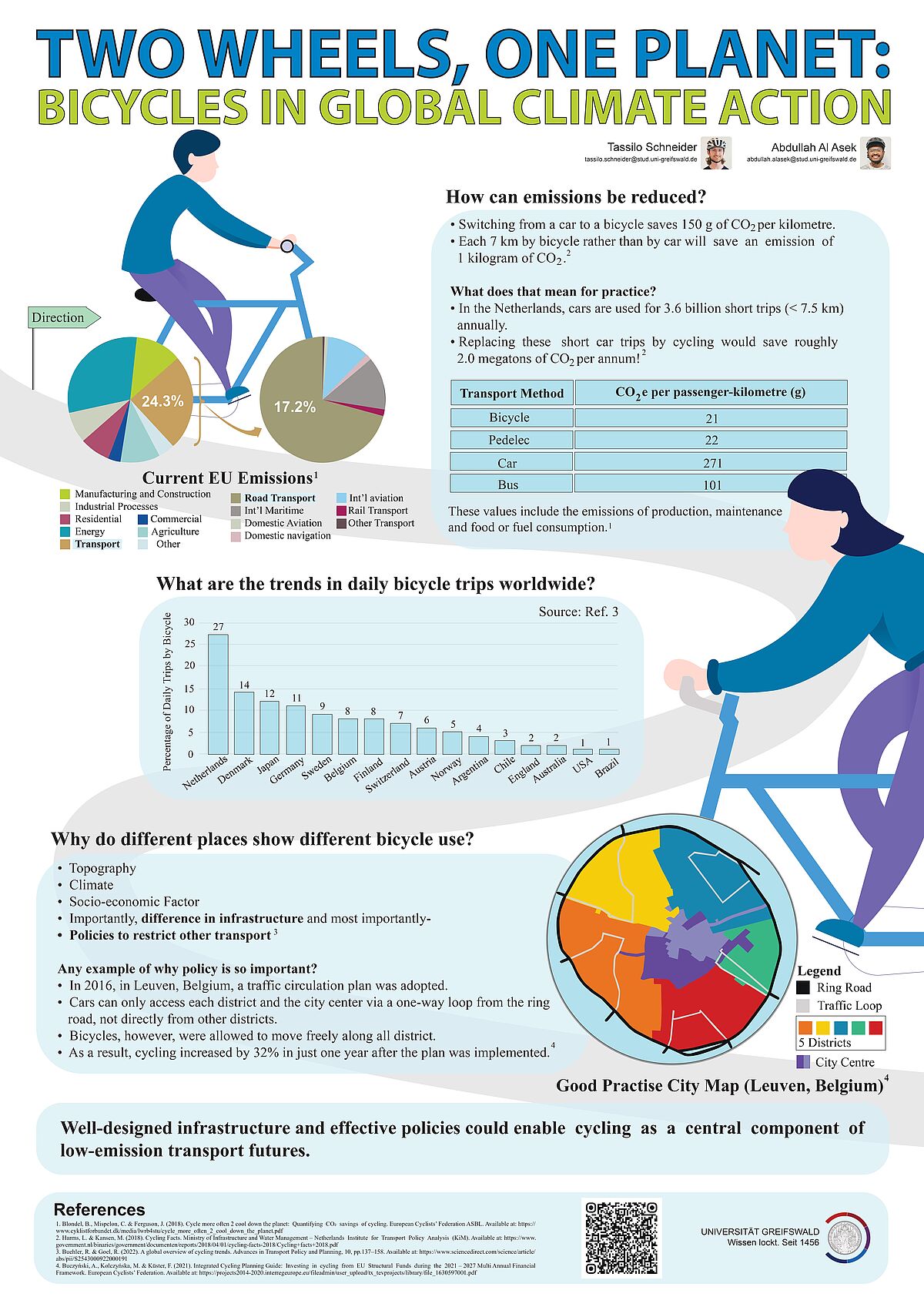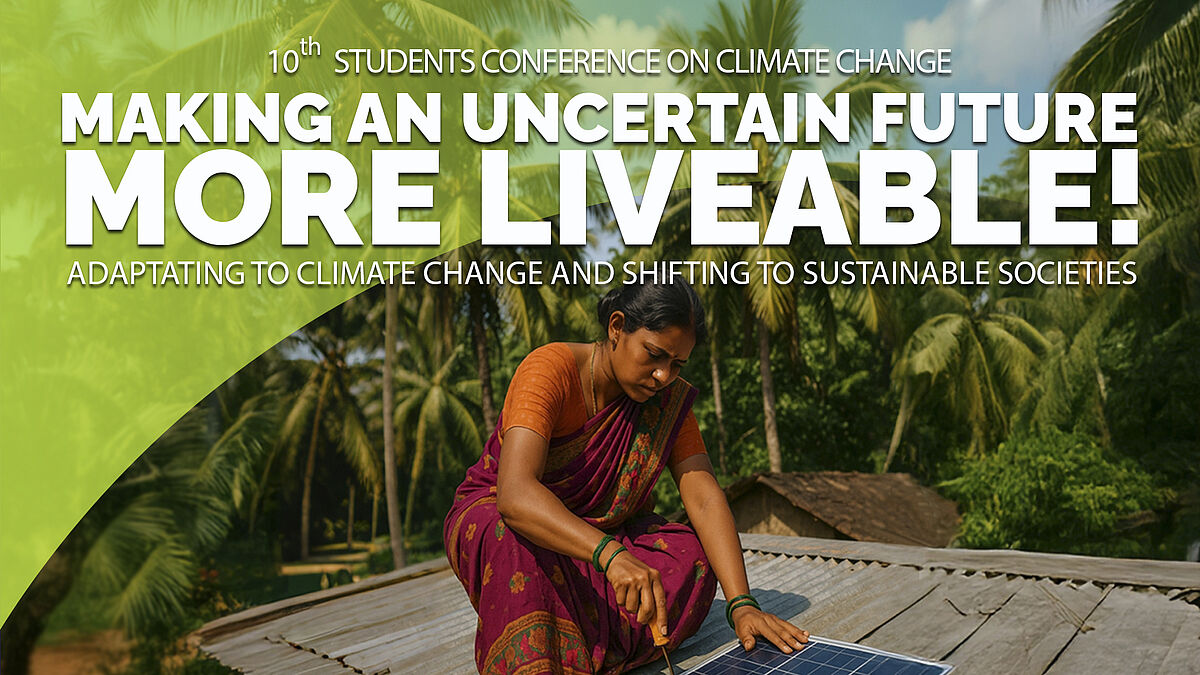
Below you can find all the contributions from students in the summer semester 2025 in the "Climate Change" module from Prof. Martin Wilmking, Ph.D.
For every topic you can find a short overview, the student's poster contribution and a 3- 5 minutes podcast.
Enjoy the virtual tour.
SESSION 01
ADAPTATION - SHORT TERM ACTION
From Science Fiction to Reality: Societies and Technology for Climate Change Adaptation
Climate change is a scenario in which societies have to find adaptation strategies for mitigating is effects. Recently technological advances such as artificial intelligence, renewable energy, electric vehicles, remote sensing are being used for dealing, monitoring and reducing the effects of climate change in the world. The aim of this poster is to give a general view of the most used technologies in the adaptation towards climate change.
Retreat or reinforce? – Two Contrasting Coastal Adaptations to Rising Sea Levels
As sea-levels rise and flood risks intensify, countries are compelled to adapt, each following a distinct approach. While the Netherlands invest in high-tech engineering to defend its land, Bangaldesh increasingly relies on managed retreat. This presentation compares the two approaches and explores how geography, resources and social vulnerability shape adaptation choices in the face of a changing climate.
Glacial Retreat-Driven Hazards and the Adaptive Capacity of High-Altitude Communities
The poster highlights the rapid retreat of glaciers worldwide due to climate change, averaging 10 meters per year. This poses serious threats to high-altitude communities through hazards like glacial lake outburst floods (GLOFs), avalanches, and flash floods. Over 15 million people are at risk, especially in countries like India, Pakistan, Peru, and China.
Adaptation remains challenging due to limited resources and difficult terrain. Early Warning Systems (e.g., Cirenmaco in the Himalayas) play a key role in monitoring and reducing disaster risk. Strengthening scientific research, monitoring, and community preparedness is essential to protect vulnerable mountain populations.
Melting Glaciers - Exploring Flood Adaptation in Mountain Areas
Rising temperatures cause mountain glaciers worldwide to melt faster. As glaciers retreat, lakes grow – and with them, the risk of severe glacier lake outburst floods (GLOFs). This poster pictures early warning systems for GLOF events as an integral part of climate change adaptation in mountain areas, helping to protect mountain communities and their livelihoods worldwide.
Stormproofing Societies: Lessons in Climate Adaptation from Around the World
How does anthropogenic Climate Change influence the intensity and frequency of storms?
-> Increasing due to rising sea surface temperatures and shifting weather patterns?
These more extreme events pose a serious threat to vulnerable communities, particularly in low-lying or poorly resourced regions. Adaptation strategies—such as improved early warning systems, resilient infrastructure, and community-based preparedness—are essential to reduce risk and enhance long-term resilience.
Staying Cool in a Warming City - Strategies for Heatwave Resistance
Cities are increasingly exposed to extreme heat as a result of climate change and continued urban growth.
To reduce health risks and improve thermal comfort, cities are turning to adaptation strategies, such as cooling centres, reflective materials, green infrastructure, and digital warning systems. These measures aim to reduce health risks during heatwaves and support more liveable, heat-adapted urban environments.
Living with the Fire in California - Past, Present and Future
Wildfires are an ecological necessity to many ecosystems in California. But climate change and human influence have increased frequency, intensity and severity in past years, leading to property damage and human casualties. Adaptation strategies like forest management, fuel breaks, fireproofing homes and early warning systems gained in importance.
Malaria: a Vector-Borne Disease Risks in a Warming World (Malaria, sub-Saharan region)
Vector-borne diseases in the subsaharan region, especially in tropical parts of afrika are a common risk. With climate change these vektors expand their range to the north and influence areas that might not be as prepared as they should be to handle these diseases. This study aims to show how these communities cope and handle the increasing risk of vector borne diseases.
Preserving The Past, Preparing for The Future: Cultural Heritage and Climate Change
Our poster presents the threats climate change poses to cultural heritage. It also shows how we can adapt the heritage sites to protect them from potential damage. Lastly we want to show why we should even care in the first place because in some aspects we can learn from the past how to deal with the effects of climate change.
SESSION 02
SHIFTS TO SUSTAINABLE SOCIETIES - LONG-TERM VISION
Climate Solutions in a Value-driven World
Our topic gives an overview on how shifts in values—alongside social norms—can drive both climate change mitigation and adaptation on individual, societal, and global levels. We examine how value systems shape behaviour, influence policy, and either enable or hinder sustainable transformation.
Green Desalination: Fresh Hope for Arid Regions
As climate change accelerates, arid regions are facing more heat, less rain, and worsening land degradation—while water demand continues to rise due to population growth, agriculture, and urbanization. Traditional water sources are no longer enough.
This poster presents green desalination—a more sustainable form of desalination powered by renewable energy. It offers a lower-emission alternative to conventional methods and supports long-term water security in arid regions.
Wind Catchers- Ancient Innovation for Modern Climate Solutions
Climate change is pushing societies to explore both traditional and modern solutions for adaptation and mitigation. Wind catchers, an ancient architectural innovation, are being rediscovered as a sustainable method for natural ventilation and passive cooling. These structures, once common in Iran, Egypt, and the Arabian Peninsula, use wind pressure and thermal buoyancy to regulate indoor temperatures without electricity. Today, they are being integrated into modern architecture with enhancements like automated vents and solar-powered fans. This poster highlights how reviving such traditional knowledge can contribute to building climate-resilient, low-carbon, and eco-friendly infrastructures.
Rewetting Peatlands: From Emissions Source to Carbon Sink
Drained peatlands emit large amounts of greenhouse gasses, so rewetting them is an important measure against global warming. We will also present some options for the use of rewetted peatlands.
Carbon Capture and Storage - Can rocks really save us from Climate Change?
Choosing the right spot as a Storage Space for CO2 is a serious matter considering the multitude of events that can happen in our underground. As much as choosing the right spot beforehand there is no room to make any mistakes while pumping gases into storage spaces.
The Poster gives an overview of the Storage possibilities for CO2 in the ground and the risks that we have to expect if we make a mistake before and while we dispose our gaseous factory waste.
Two Wheels, One Planet: Bicycles in Global Climate Action
The Topic is about the sustainability of cycling compared to other transport methods (Car, Bus). Transport has a big share in european emissions. Using the bicycle instead of motorized transport could save a lot of emissions.
For that a city also needs the appropriate infrastructure and bike-friendly policies. We want to show an example how a city could encourage people to use the bike more often.
Concluding we ask the question why people choose the bicycle or not and what other benefits come with cycling.

